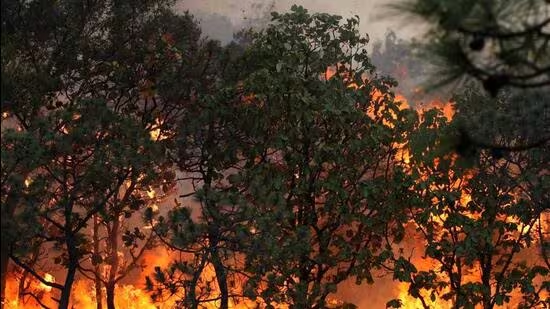Forest fires intensifying globally, India’s rainforests among worst affected

The worst affected are the Boreal forests covering large coniferous forests in Russia, Canada, US, Finland, Norway, China and Japan followed by tropical forests covering biodiversity hotspots such as the Amazon, and the rainforests in southeast-Asia and India.
Increasing tree cover loss due to fires in the tropics is causing higher carbon emissions (just as it is in the Boreal forests). Previous studies found that in some years, forest fires accounted for more than half of all carbon emissions in the Brazilian Amazon. The Amazon basin may be nearing or already at a tipping point for turning into a net carbon source as opposed to one of world’s largest carbon sinks, the analysis said. The increase in forest fires is largely driven by climate crisis.
In India, where the peak fire season begins in mid-February and lasts around 14 weeks, there were 14,689 VIIRS (Visible Infrared Imaging Radiometer Suite; basically satellite observations) fire alerts reported between August 29, 2022, and August 28, 2023, considering high-confidence alerts only. This is unusually high compared to previous years going back to 2012, the data analysed by World Resources Institute states.
From 2001 to 2022, India lost 3.59 lakh hectares of tree cover from fires and 2.15 million hectares from all other drivers of loss. The year with the most tree cover loss due to fires during this period was 2008 with 3000 hectares lost to fires, 3.5% of all tree cover loss for that year, the data states.
According to data with Forest Survey of India, between November 2021 and June 2022, there were 2,23,333 forest fires in India and between November 2022 and June 2023 there were 2,12,249 .
From 2002 to 2022, India lost 3.93 lakh hectares of humid primary forest, making up 18% of its total tree cover loss in the same time period according to satellite data used by WRI. Total area of humid primary forest in India decreased by 3.9% in this time period.
The situation is alarming at the global level too.
“Using data from a recent study by researchers at the University of Maryland, we calculated that forest fires now result in 3 million more hectares of tree cover loss per year compared to 2001 — an area roughly the size of Belgium — and accounted for more than one-quarter of all tree cover loss over the past 20 years,” the analysis by WRI released on August 29 said.
2021 was one of the worst years for forest fires since the turn of the century, causing an alarming 9.3 million hectares of tree cover loss globally — over one-third of all tree cover loss that occurred that year. “Though down from the previous year, over 6.6 million hectares of tree cover was lost to forest fires in 2022, similar to other years over the past decade. And in 2023, the world has already seen heightened fire activity, including record-breaking burns across Canada and catastrophic fires in Hawaii,” the analysis added.
Climate change is one of the major drivers of increasing fire activity. Hotter temperatures cause land to dry out and help create conditions for more frequent forest fires. This in turn leads to higher emissions further exacerbating climate change and contributing to more fires as part of a fire-climate feedback loop, the analysis added. Other climate drivers such as El Nino Southern Oscillation also play an important role in the increase in forest fires. During the 2015-2016 El Niño, for example, tree cover loss due to fires increased 10-fold in the tropical rainforests of Southeast Asia and Latin America. A new El Niño event emerged in June 2023 and is expected to last through early 2024.
Culled from Hindustan Times

